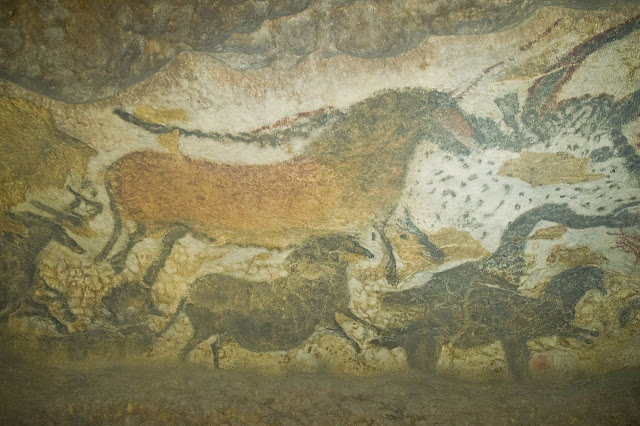Lascaux is the setting of a
complex of caves is the France most famous for its Paleolithic cave paintings. The cave contains some of best known Upper
Paleolithic art. These paintings are believed to be 18000 years old. The
paintings primarily comprises of large images of animals. It is thought, these
are best known fossil evidence to have lived in this area at that time. Therefore,
in 1979 the cave was added to the UNESCO World Heritage Sites list along with
other prehistoric sites in the Vézère valley. The figures, which can be grouped
into three main categories: animals, human figures, and abstract signs. Lascaux
cave has often been referred to well-known for their artistry, more than 2000-strong
menagerie of animal images are depicted in Technicolor shades of red, black,
yellow and brown, ranging from reindeer, aurochs, mammoths and horses to a
monumental 5.5m-long bull, the largest single cave drawing ever found.
The cave was totally sealed and
protected for ages; until 1940 it was discovered by four teenaged boys out
searching for their lost dog. It comprises a massive network of chambers well
decorated with the most complex prehistoric paintings ever found. In 1948, the
original cave was opened for visitors, but within 15 years it became apparent
that human breath, temperature changes and introduced elements were causing irrevocable
damage, and the cave was closed in 1963. Carbon dating has shown that the
paintings are still a mystery why the prehistoric painters consumed so much
time and efforts to their creation, and why this specific site seems to have
been so significant. Moreover, the most famous section of the cave is “The
Great Hall of the Bulls” where bulls, equines, and stags are depicted.



















































